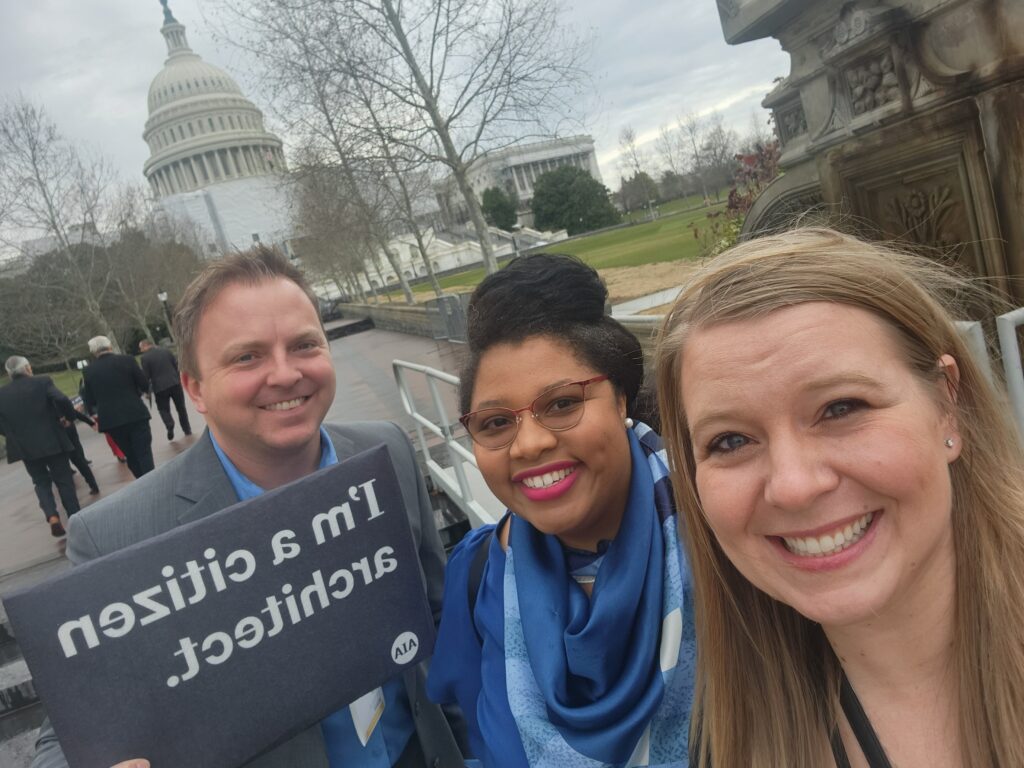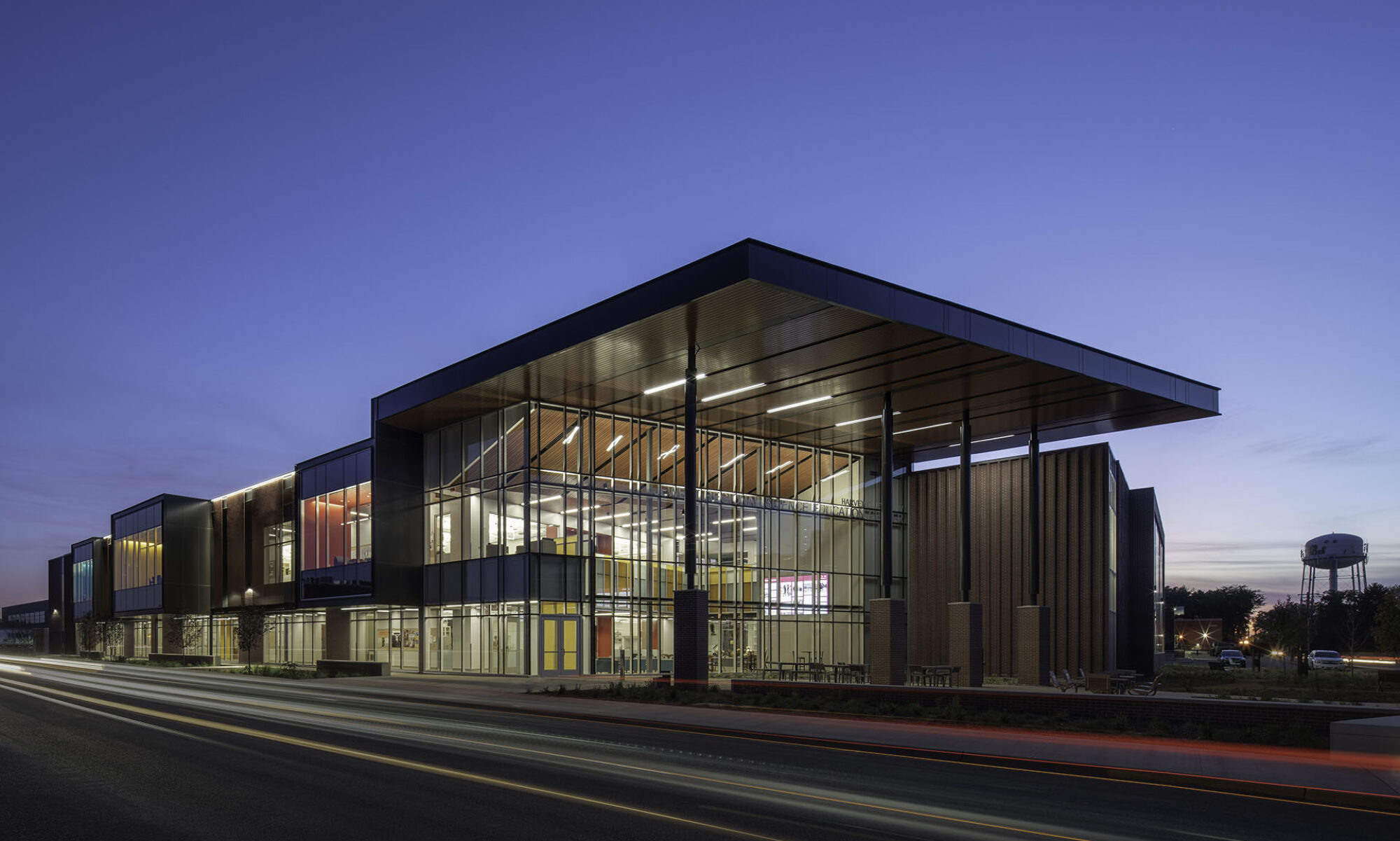(Cover Image by AIA National)
Every year, AIA National puts on AIA Leadership Summit (formerly Grassroots) to bring together AIA volunteer leaders, chapter executives, and chapter staff across regions, specialties, firm sizes, and career stages focused on advancing and developing advocacy and leadership within each state.
This year, Justin Oleson, AIA SD Secretary/Treasurer, Angela Lammers, AIA SD Executive Director, and myself, AIA South Dakota President, attended this convention on behalf of the AIA SD.
As part of this summit, we had the opportunity to participate in Lobby Day 2023 to met with staffers from Representative Johnson, Senator Rounds and Senator Thune. We were able to talk through various state issues, as well as provide information two major issues brought by National AIA. More information on the Resilient AMERICA Act and Democracy in Design below, provided by AIA.

RESILIENT AMERICA ACT
AIA urges Congress to authorize the Resilient Assistance for Mitigation for Environmentally Resilient Infrastructure and Construction by Americans (AMERICA) Act (Resilient AMERICA Act) to improve and equip community efforts to prepare for these challenges. This bipartisan bill would increase allocations to one of the federal government’s most effective pre-disaster mitigation programs (FEMA’s BRIC Program). It would expand the eligible uses
of federal assistance to cover additional natural hazards, like wildfires, tsunamis, and ice storms. By providing specific set-aside pre-disaster mitigation funds to assist communities in adopting and enforcing the latest editions of resilient building codes, communities will make great strides toward preparedness.
Additionally, the Resilient AMERICA Act would expand FEMA’s Building Resilient Infrastructure and Communities (BRIC) program, making private non-profits eligible for grant funding and establishing a new residential resilience retrofit grant program. Taken together, these reforms shift federal funding toward mitigation ahead of the storms, instead of just waiting to disburse funds after disasters strike. Through these improvements, communities from coast to coast will be able to rest easier knowing their families’ lives and personal property are ready to withstand the natural disasters they know will eventually come.

DEMOCRACY IN DESIGN
The bill would codify the U.S. General Services Administration’s (GSA) “1962 Guiding Principles for Federal Architecture,” prohibiting the federal government from mandating any national design style. This ensures that no architectural style may be preferred nor prohibited by the federal government. Officially maintaining a style-neutral position respects this country’s regional differences, as various communities may have different preferences, topographies, and design traditions. It also encourages American architectural innovation.
Additionally, the Democracy in Design Act would safeguard the GSA’s Design Excellence Program, which guides the GSA’s process to acquire, design, and construct public buildings. The legislation directs the GSA to undergo enhanced formal rulemaking processes on any proposed changes to the Design Excellence Program, including an opportunity for the public to comment. This would increase transparency in the federal design process, while also allowing the program to evolve for modern needs.
Allison Dvorak, AIA, CPHC, is a member of the AIA South Dakota Board of Directors, liaison to the Emerging Professionals and Communication committees, and an architect in Sioux Falls. She received her M.Arch from North Dakota State University and continues to develop her Master’s thesis of researching and implementing design theories focused on human centered design through speaking engagements, design practice, and one-on-one client education. Allison lives in Sioux Falls with her husband, son and daughter.


